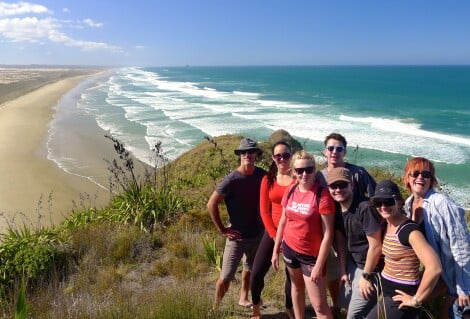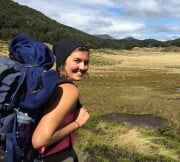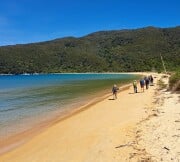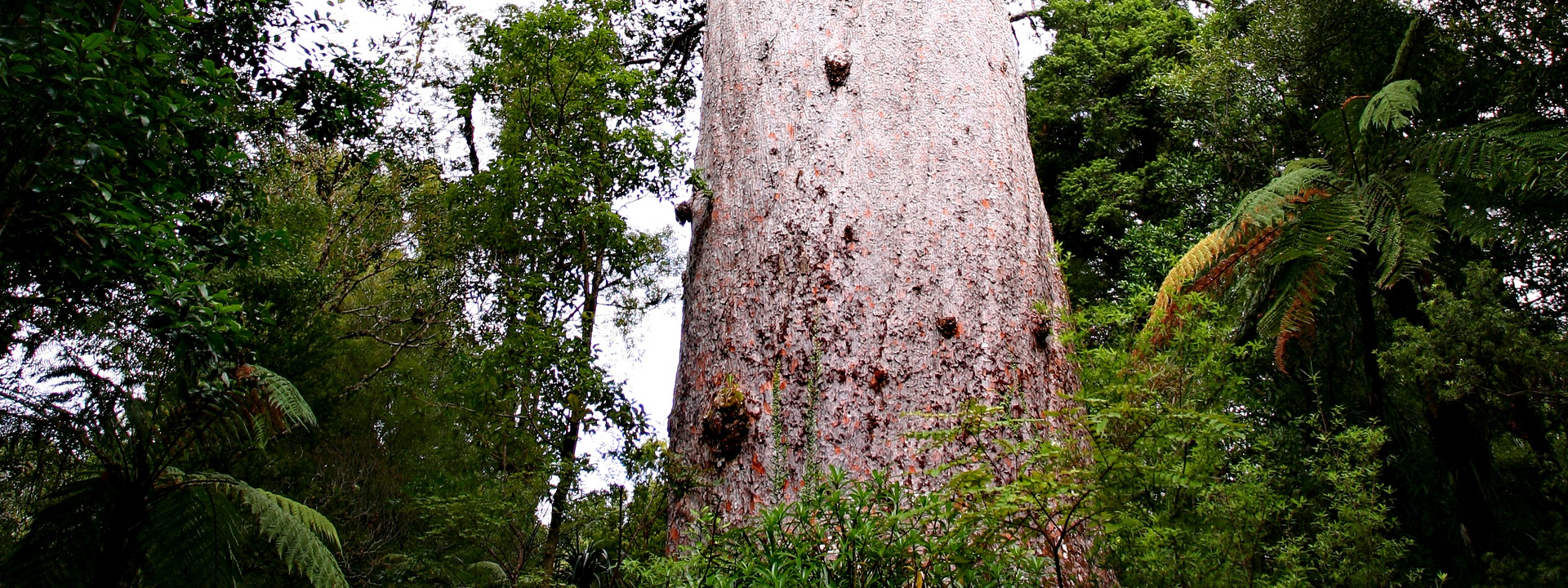The Far North's wild west coast pins New Zealand’s extensive kauri forests up against the tumultuous Tasman Sea. Periodically, huge inland waterways burst through the rocky coastline and suddenly you are beside bobbing boats and the rural splendour of quiet, rolling farmland. The Kauri Coast is named for the majestic and ancient kauri (agathis australis) towering over the landscape. One road winds north through the only remaining areas of significant kauri forest. This giant is endemic to New Zealand and only grows naturally at latitudes north of 38°.
A Forest Steeped in History
The Kauri Coast’s history is deeply rooted in these forests, once vital to Māori for waka (canoes) and building. Later, European settlers logged them, turning the region into a hub for timber and kauri gum (used in varnish manufacturing) exports in the 19th century. Large swathes of forest were lost, but today conservation efforts protect the remaining ancient trees.
The living heart of the Kauri Coast is Waipoua Forest, the largest remaining tract of native forest in Northland. It is home to Tāne Mahuta, the largest known kauri tree, standing at 51.5 metres tall and estimated to be 2000 years old. This natural monument is named after the Māori god of the forest, who, according to legend, pushed his father, Ranginui the Sky Father, away from his mother, Papatūānuku the Earth Mother, creating the space for light to enter the world and life to flourish.
Life Along the Hokianga
Opononi and Omapere are two charming seaside towns nestled along the Hokianga Harbour. Expect sweeping views of the harbour out to massive rising sand dunes. You can explore the calm waters, ideal for swimming and fishing, or take a boat across to the dunes for a day of sandboarding. These towns have a slower pace of life that provides an authentic glimpse into Northland’s coastal lifestyle.
 6 Days
6 Days






